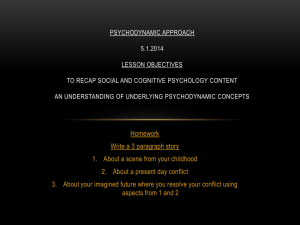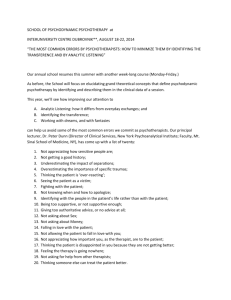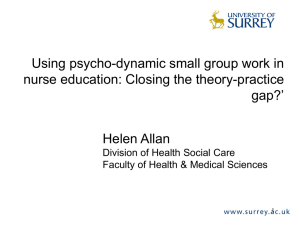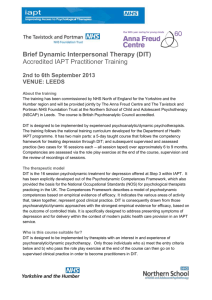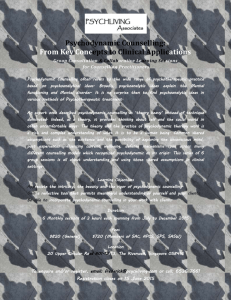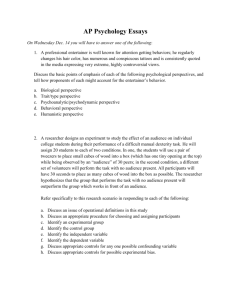MODUL PERKULIAHAN Psikologi Konseling
advertisement
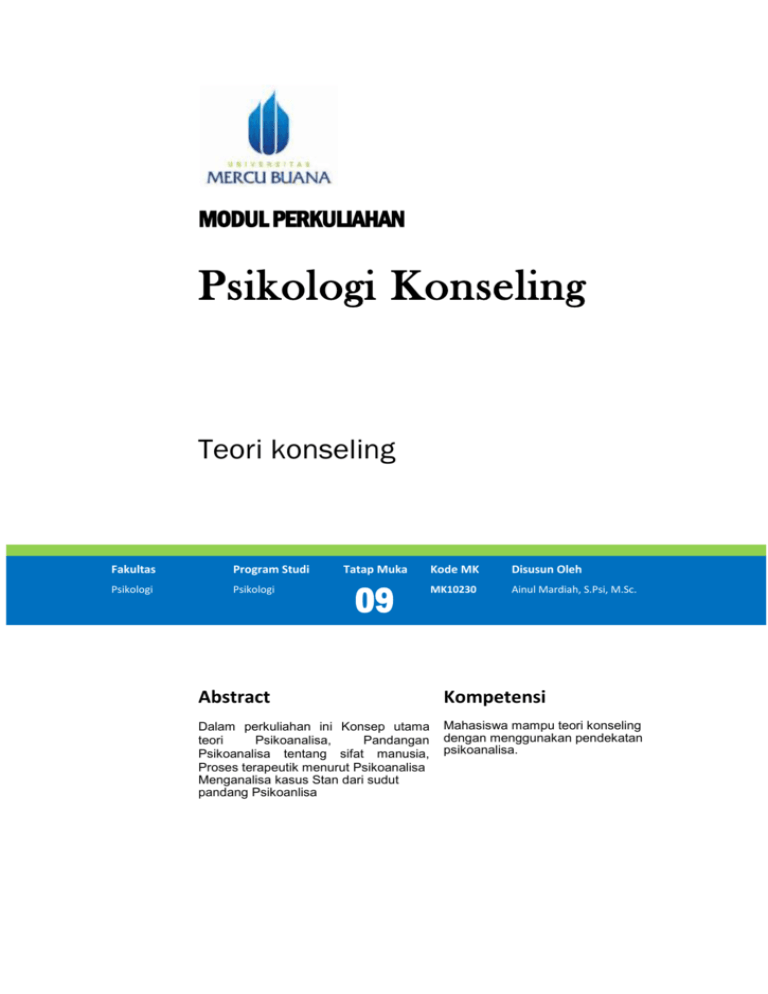
MODUL PERKULIAHAN Psikologi Konseling Teori konseling Fakultas Program Studi Psikologi Psikologi Tatap Muka 09 Kode MK Disusun Oleh MK10230 Ainul Mardiah, S.Psi, M.Sc. Abstract Kompetensi Dalam perkuliahan ini Konsep utama teori Psikoanalisa, Pandangan Psikoanalisa tentang sifat manusia, Proses terapeutik menurut Psikoanalisa Menganalisa kasus Stan dari sudut pandang Psikoanlisa Mahasiswa mampu teori konseling dengan menggunakan pendekatan psikoanalisa. eager to discuss and disseminate them. When empirical evidence supported psychodynamic concepts and treatments, it was often overlooked. This article brings together findings from several empirical literatures that bear on the efficacy of psychodynamic treatment. I first outline the distinctive features of psychodynamic therapy. I next review empirical evidence for the efficacy of psychodynamic treatment, including evidence that patients who receive psychodynamic therapy not only maintain therapeutic gains but continue to improve over time. Finally, I consider evidence that non psychodynamic therapies may be effective in part because the more skilled practitioners utilize interventions that have long been central to psychodynamic theory and practice. Distinctive Features of Psychodynamic Technique Psychodynamic or psychoanalytic psychotherapy refers to a range of treatments based on psychoanalytic concepts and methods that involve less frequent meetings and may be considerably briefer than psychoanalysis proper. Session frequency is typically once or twice per week, and the treatment may be either time limited or open ended. The essence of psychodynamic therapy is exploring those aspects of self that are not fully known, especially as they are manifested and potentially influenced in the therapy relationship. Undergraduate textbooks too often equate psychoanalytic or psychodynamic therapies with some of the more outlandish and inaccessible speculations made by Sigmund Freud roughly a century ago, rarely presenting mainstream psychodynamic concepts as understood and practiced today. Such presentations, along with caricatured depictions in the popular media, have contributed to widespread misunderstanding of psychodynamic treatment (for discussion of how clinical psychoanalysis is represented and misrepresented in undergraduate curricula, see Bornstein, 1988, 1995; Hansell, 2005; Redmond & Shulman, 2008). To help dispel possible myths and facilitate greater understanding of psychodynamic practice, in this section I review core features of contemporary psychodynamic technique. Blagys and Hilsenroth (2000) conducted a search of the PsycLit database to identify empirical studies that compared the process and technique of manualized psychodynamic therapy with that of manualized cognitive behavioral therapy (CBT). Seven features reliably distinguished psychodynamic therapy from other therapies, as determined by empirical examination of actual session recordings and transcripts (note that the features listed below concern process and technique only, not underlying principles that inform these techniques; for a discussion of concepts and principles, see Gabbard, 2004; McWilliams, 2004; Shedler, 2006a): 2014 2 Psikologi Konseling Ainul Mardiah, S.Psi, M.Sc Pusat Bahan Ajar dan eLearning http://www.mercubuana.ac.id 1. themselves from the bonds of past experience in order to live more fully in the present. 2. Focus on interpersonal relations. Psychodynamic therapy places heavy emphasis on patients’ relationships and interpersonal experience (in theoretical terms, object relations and attachment). Both adaptive and non adaptive aspects of personality and self-concept are forged in the context of attachment relationships, and psychological difficulties often arise when problematic interpersonal patterns interfere with a person’s ability to meet emotional needs. 3. Focus on the therapy relationship. The relationship between therapist and patient is itself an important interpersonal relationship, one that can become deeply meaningful and emotionally charged. To the extent that there are repetitive themes in a person’s relationships and manner of interacting, these themes tend to emerge in some form in the therapy relationship. For example, a person prone to distrust others may view the therapist with suspicion; a person who fears disapproval, rejection, or abandonment may fear rejection by the therapist, whether knowingly or unknowingly; a person who struggles with anger and hostility may struggle with anger toward the therapist; and so on (these are relatively crude examples; the repetition of interpersonal themes in the therapy relationship is often more complex and subtle than these examples suggest). The recurrence of interpersonal themes in the therapy relationship (in theoretical terms, transference and counter-transference) provides a unique opportunity to explore and rework them in vivo. The goal is greater flexibility in interpersonal relationships and an enhanced capacity to meet interpersonal needs. 4. Exploration of fantasy life. In contrast to other therapies in which the therapist may actively structure sessions or follow a predetermined agenda, psychodynamic therapy encourages patients to speak freely about whatever is on their minds. When patients do this (and most patients require considerable help from the therapist before they can truly speak freely), their thoughts naturally range over many areas of mental life, including desires, fears, fantasies, dreams, and daydreams (which in many cases the patient has not previously attempted to put into words). All of this material is a rich source of information about how the person views self and others, interprets and makes sense of experience, avoids aspects of experience, or interferes with a potential capacity to find greater enjoyment and meaning in life. The last sentence hints at a larger goal that is implicit in all of the others: The goals of psychodynamic therapy include, but extend beyond, symptom remission. Successful treatment should not only relieve symptoms (i.e., get rid of something) but also foster the positive presence of psychological capacities and resources. Depending on the person and the circumstances, these might include the capacity to have more 2014 3 Psikologi Konseling Ainul Mardiah, S.Psi, M.Sc Pusat Bahan Ajar dan eLearning http://www.mercubuana.ac.id

